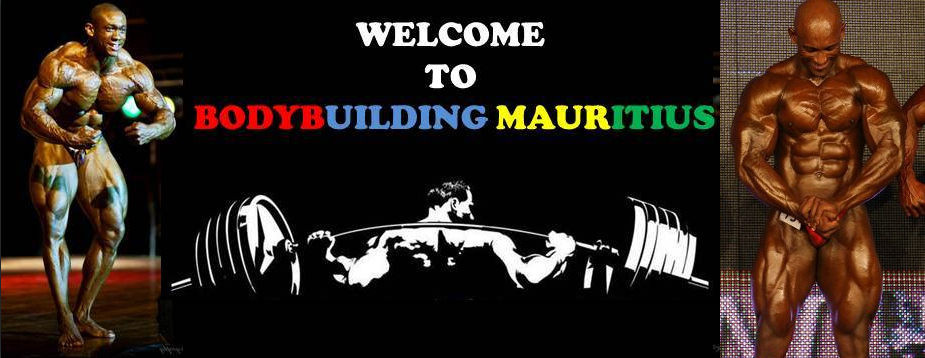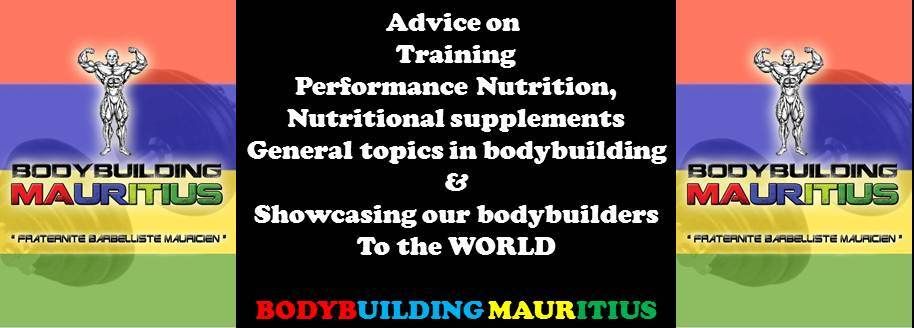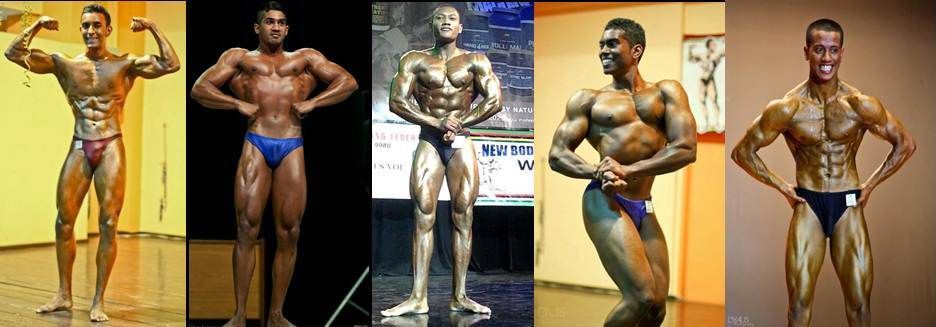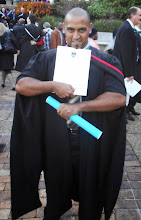Old School Training
Intermediate Deltoid Training
By Larry Scott

Article taken from Ditillo Blogspot.
The goal of most bodybuilders is to build shoulders of really massive
proportions. They don't care how, just as long as those shoulders stun the
average person with their barn-door width. Unfortunately, this is just about
all the average bodybuilder knows about the deltoids. Most are completely
unaware of the three heads of the deltoid and how to develop each one. They
are:
1. The Anterior, or frontal deltoid.
2. The Lateral, or side deltoid.
3. The Posterior, or rear deltoid.
The lateral is the most popular deltoid head, as it is the one that contributes
the most to shoulder width. Steve Reeves was one of the leading proponents of
developing this muscle, and it was really a sight to see him working them. He
used to do Inclined Side Laterals until the area fairly burst with blood!
Although the lateral head of the deltoid is the most popular of the three, it
is not the one worked the most. The anterior head gets that honor. Sounds
rather confusing, doesn't it? Well, the answer lies in both the fact that Dips,
Presses an Bench Presses work the anterior head very strongly, and also the
fact that most bodybuilders simply use improper form in doing their lateral
deltoid work.
Finally we come to the posterior deltoid. This poor fellow hardly gets any work
at all, it's just left to fend for itself, growing through auxiliary exercises
alone. If Nature was quick to do away with dis-used bodyparts, the posterior
deltoid would soon atrophy into nonexistence.
Yet this lowly muscle is extremely important in developing depth in the
shoulder region, for without it the shoulder will appear flat from the side.
And, it appears flat because that's just what it is: flat.
We have a saying around Vince's Gym, where I train . . . "Sure, he looks
good from the front but is he a surfboard?" You've all seen surfboards, or
pictures of them . . . they are wide and very, very flat. A
"surfboard" bodybuilder is just the same . . . wide, but flat. They
have no posterior deltoids at all. If you want this thin and round-shouldered
appearance, okay, but if you want the well-rounded look of a champion, then
posterior deltoid work is a real must.
The trouble encountered in deltoid work is complex and requires a real study of
the movement of each individual head of the deltoid throughout an exercise
motion. As mentioned before, the anterior deltoid is usually worked while the
trainee is allegedly bombing his lateral deltoid head. The reason for this is
the position of the elbows . . . it takes only a slight shift in their angle to
transfer the stress of the exercise to the wrong deltoid head.
To help correct this, you should remove your training shirt and watch the
movement of the muscle as you are working it. This is one time to really be a
mirror athlete, to use that mirror to watch the three heads and make doubly
sure you are properly working the muscle.
There are many problems such as this in your deltoid training, and in my
exercise routines I've endeavored to answer as many of these problems as I
possibly can. That is why I urge you to follow exactly as I explain the
exercise movements in these courses. Probably one of the reasons deltoid work
is so popular is the difficulty in obtaining them. It's the old law of supply
and demand; the harder it is to get, the greater the value.
Exercises
All three of these courses are good. The first course is the easiest to feel,
the second is a little more difficult, and the third is the hardest to feel.
Try each course for a period of six weeks, then go on to the next. Each course
is designed to take up where the previous one left off, in a logical
progression. And remember, you are trying to develop your deltoids and
consciousness of feeling the correct muscles working with these three courses.
After that, the advanced courses will be applicable and will work efficiently,
but not before.
The three courses together represent a complete plan of shoulder development up
to the intermediate stages. When you're ready for the more advanced training
you should have symmetrical deltoid development, with impressive muscle size in
all three heads.
Also, a final reminder is in order. Because the deltoid region is one of the
very hardest to work correctly, you should read the exercise descriptions
carefully and follow them exactly.
Now, here is your beginning course. The movements are not too difficult to
perform, and they will help you get accustomed to the feel of the various
muscles working.
Exercise 1 - Barbell Press
This is a movement where you can really use some weight. That is, you should do all your exercises in proper form, but in some, such as this one, you should also use as much weight as you can while keeping good form. In other movements the weight is not so important.
Start by holding the bar at your shoulders, with a grip slightly wider than the shoulders. If you wish, you can try it with an extra-wide grip . . . this works the deltoid equally well, and for our purposes where you hold the bar is just a matter of personal preference. I alternate between the two widths for a little variety.
When looking for bodybuilding results, the most important point to remember in doing this exercise is to keep the elbows as far back as possible while you're pressing the weight. If the elbows stray forward, the stress of the movement is transferred to the triceps in large part. Also, don't cheat with your legs . . . keep the knees locked throughout the movement.
Sets and Reps: beginners do at least 3 sets of 8 reps. Intermediates do 4 to 5 sets of 8 reps.
Exercise 2 - Upright Rowing
Try not to get weight-happy in this exercise, for your form is the most important factor. Wait until you have the movement down pat before you start to add more plates.
If you are doing the exercise correctly for our purposes you will notice the front and side deltoid heads and the trapezius starting to grow over time. An important point to remember for correct growth is to try not to lift the shoulders while you are doing the movement. Your arms are supposed to be doing the moving alone, otherwise the trapezius will get too much work.
Hold the bar in the center, either about six inches apart or with your hands together, depending on your preference. I usually do it with a little distance between the hands. Lift the bar straight up to your neck, keeping the elbows out in front of you. Lower SLOWLY and repeat.
Sets and Reps: beginners do 2 sets of 10 reps. Intermediates do 3 or 4 sets of 10 reps.

Course Number One
Exercise 3 - Incline Lateral Raise, Two Arms
The weight used in this movement is not too important, but the form is. Remember, these courses are designed to help you achieve proper performance of the exercises, and feel the chosen muscles working to the maximum. In doing that, you will prepare yourself for the more advanced work ahead and gain some of the muscle you desire as well.
Don't try to cheat in this exercise at all . . . lie with your chest flat against the incline bench (facing the high end)), and don't try to raise it at any time during the movement. Just raise the dumbbells as high as you can, out to your sides.
If you prefer, turn your head to the side for a bit more comfort. And, if you think the puny weights you're using aren't doing any good, you're wrong. The burn you get from this exercise alone makes it worth it weight in muscle . . . keep it up and you'll get some really sensational results.
Sets and Reps: Beginners do 2 sets of 12 reps. Intermediates do 3 or 4 sets of 14 reps!
Exercise 4 - Bentover Side Lateral Raise
The weight used in this movement is not too important, but the form is. Remember, these courses are designed to help you achieve proper performance of the exercises, and feel the chosen muscles working to the maximum. In doing that, you will prepare yourself for the more advanced work ahead and gain some of the muscle you desire as well.
Don't try to cheat in this exercise at all . . . lie with your chest flat against the incline bench (facing the high end)), and don't try to raise it at any time during the movement. Just raise the dumbbells as high as you can, out to your sides.
If you prefer, turn your head to the side for a bit more comfort. And, if you think the puny weights you're using aren't doing any good, you're wrong. The burn you get from this exercise alone makes it worth it weight in muscle . . . keep it up and you'll get some really sensational results.
Sets and Reps: Beginners do 2 sets of 12 reps. Intermediates do 3 or 4 sets of 14 reps!
Exercise 4 - Bentover Side Lateral Raise
The weight is a little more important in this movement than in the last, but
form is again of paramount importance. Make sure you do it right, and don't be
afraid to increase the weight when you can.
The exercise is excellent for working the side and rear deltoid heads, but you
should watch yourself in the mirror very closely to make sure you're doing it
correctly. Be sure to keep your shoulder low at all times, and just lift the
arm. Do one arm and then the other right away . . . you don't need to rest
between them.
Sets and Reps: Beginners do 2 sets of 12 reps. Intermediates do 4 sets of 10
reps.
Course Number Two
The exercises are a bit more difficult in this
group. The experience obtained from the previous course should make you ready
for this batch, though. Inasmuch as the movements are more difficult, you
should pay closer attention to the exercise descriptions and your performance
of them.
Exercise 1 - Standing Alternate Dumbbell Press
This is the heavy one of the group, so you should
try to use all the weight you can while still maintaining proper form. Hold the
dumbbells at the shoulder, and press one of them overhead. As the first one
starts on its return trip down, press the other dumbbell up, so they are
working in alternate fashion. And remember, for the desired effect, keep your
elbows out.
Sets and Reps: Beginners do 2 sets of 8 reps, each
arm. Intermediates do 4 sets of 8 reps.
Exercise 2 - Barbell Front Raise
A little cheat may be used in this movement, and
consequently use a good, heavy weight. Just be sure you are lifting it up with
the shoulders, not throwing it up.
Hold the bar with a shoulder-width grip, and lift
it up and out with your arms locked throughout the movement. Do not use too
much upper back motion, rather try to keep your upper body as stiff and
motionless as possible.
Sets and Reps: Beginners do 2 sets of 10 reps.
Intermediates also 2 sets of 10 reps.

Exercise 3 - Incline Bench Lateral Raise, One Arm
This is the exercise that the great Steve Reeves
used to do all the time, and when done correctly it works solely on the side
deltoid head, swelling it to large proportions. But this is another one of
those exercises where weight is of minor importance compared to the exercise
form, so you must do it properly for best results.
The arm is never locked out during the movement, rather always keep a slight
break in it. The most important form factor is the position of your palm . . .
everyone tends to bring up the inside of the palm, the thumb side, and this is
where they go wrong. This will primarily work the anterior deltoid head, and
not the lateral one. And, it's this side head you're trying to
work hard.
Well, the answer is to keep the rear of the palm higher than
the front. This will severely limit the amount of weight you
can use, but it also is the only way to correctly activate that elusive side
deltoid.
Sets and Reps: Beginners do 2 sets of 10 reps. Intermediates do 4 sets of 10
reps.
Exercise 4 - Shrugs
This is a fairly easy exercise to do right. Remember when a teacher in school
would ask you a question you didn't know the answer to? You just shrugged your
shoulders . . . and that's all you do in this movement too.
The weight you can use is considerable, as the traps can really stand it. Hold
the bar with a shoulder-width grip, and simply lift the shoulders up and return
them to their normal position. You can alternate with a circular motion, if you
wish.
Sets and Reps: Beginners should again do 2 sets of 10 reps. Intermediates do 3
sets of 10 reps.
Course Number Three
This is the most difficult of the three courses to
perform correctly, but with your previous deltoid training you should be able
to get through it okay. Let's get started . . .
Exercise 1 - Standing Dumbbell Press
This is the heavy exercise of the group, so you
should try for all the weight you can properly handle. And, keep trying to
increase it whenever you can.
This exercise was one of the great Reg Park's
favorites, and we all know what great deltoids he had! It is simple to do, and
all the comments I've made before on Pressing still go. Keep the elbows as far
back as you can, and simply press the two dumbbells overhead, with the palms
facing away from you, to the front.
Sets and Reps: Beginners do 2 sets of 8 reps.
Intermediates do 4 sets of 8 reps.
Exercise 2 - Alternate Front Raise
Use a fairly heavy pair of dumbbells for this
exercise, and make yourself really strain. Hold the dumbbells in front, resting
on your thighs. Raise one up to shoulder level, keeping the arm locked and the
outside of the palm as high as the inside, then as you are lowering it raise up
the other one. Keep alternating until you've completed your set.
Sets and Reps: Beginners do 2 sets of 10 reps.
Intermediates do 3 sets of 10 reps.
Exercise 3 - Standing Side Lateral Raise
As in most of the lateral raise movements, form is
the most important factor. Use only a weight that will pump the muscle well,
and don't allow your form to suffer because of too much weight.
Allow a slight bend at the waist, and hold the two
dumbbells in front of you. Bring the dumbbells up to the sides, remembering to
keep the outside of the palm higher than the inside at all
times. If you do not do this, the emphasis will be placed on the frontal
deltoids, and your work will be wasted. Keeping the palms in this position
restricts the amount of weight you can do, but will give you much better
results in the end.
Sets and Reps: Beginners do 2 sets of 10 reps.
Intermediates do 4 sets of 10 reps.
Exercise 4 - Rear Lateral Raises
This movement directly affects the rear head of
the deltoid, and there is no better exercise for this bodypart. We use it religiously
around the gym.
Once again, the weight is of little importance
compared to the exercise form, and the position of the palms is all-important.
If you allow them to stray, the trapezius instead of the deltoid will be
getting most of the work. Note also that the arms are not locked out, as this
too would weaken the affect on the rear deltoid.
Many times this exercise is done with the head on
a bench or something of similar height, for this takes the strain off the back
and enables you to concentrate more on the movement. Try it and see if it helps
you. Also, do not raise the dumbbells above the level of the shoulders, as this
again will affect the traps more than the delts.
Sets and Reps: Beginners do 3 sets of 10 reps.
Intermediates do 4 sets of 12 reps.
In Closing
There is a popular phrase that goes, "Little
things mean a lot", and in bodybuilding this is especially true. You can
see from the comments I have made how important little things like the angle of
the palms, the lock of the elbows, keeping the arms back while pressing, all
are essential to the success of your deltoid workouts.
Deltoid work has always been one of my favorites,
and I hope you are as interested in it as I am. But you must be, or you
wouldn't be reading this course. Well then, my best advice is to keep your eye
unceasingly on the little things in your deltoid training, and to persevere in
your training. As the delts are one of the smaller muscle units of the body,
gains are often hard to see, and frustration is easily built up if you don't
see new muscle blossoming rapidly.
You have to work hard for anything you get in
life, and in bodybuilding this is especially true. You spend all that time in
the gym, sweating and suffering for that body of yours . . . so make sure that
training is effective by always keeping your eye on those little things and
always putting 101% into your training. That way your success is assured.
Best Wishes.






















.jpg)





















